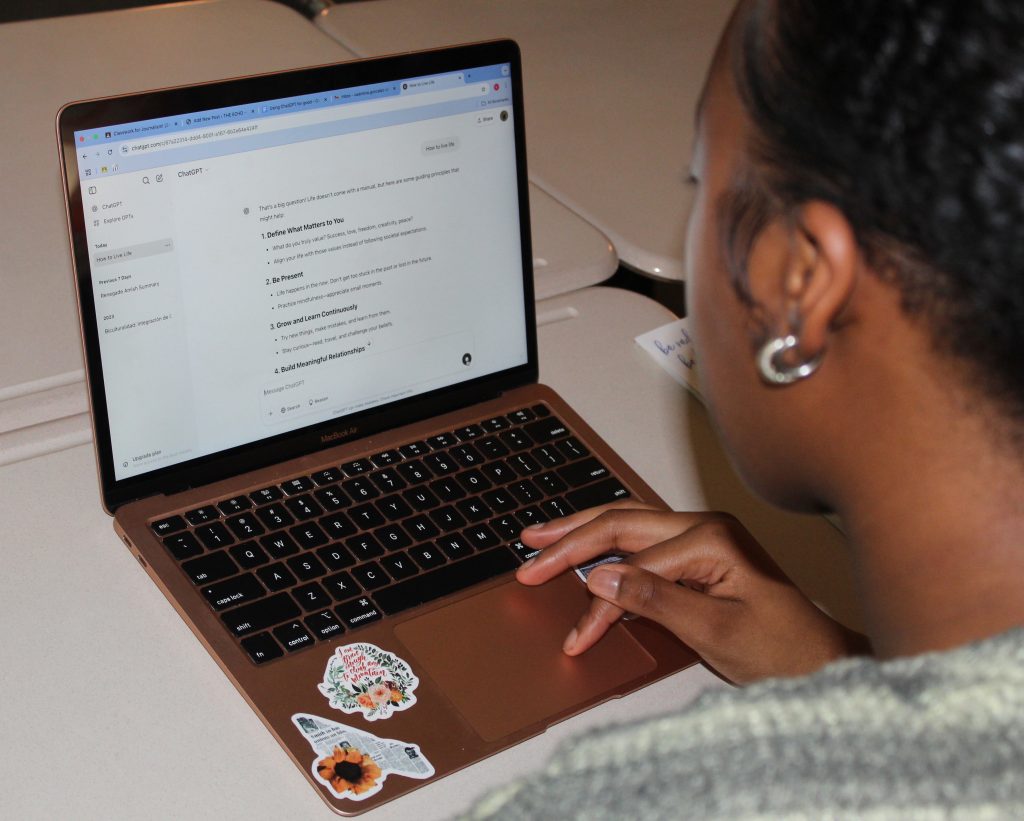Would you give up your phone for better mental health?
It’s 8am on a Monday morning, the room soaked with morning pallor. The desks, half empty, play host to the usual student medley: phone scrollers, chatters, and the occasional sleeper.
Monday melancholy seems to ooze from the rug, curling around ankles and backpacks.
It’s an environment Donna Kaufman has been around for the last thirty two years. Kaufman began her career as a special education teacher, moving through the district to become Assistant Superintendent. She wears her blonde hair in a simple bob, which frames sharp blue eyes lined gently from years of wind and sun on her father’s farm.
Throughout her career, she’s witnessed the evolution of many issues, perhaps most prominently that of mental health.
Kaufman first started seeing a change in schools in the early 2000s, but the “last ten years” have brought another large shift.
Thirty years ago there was “very little, if any [discussion about mental health]…we would talk about behavior disorders, but it was more about correcting behavior…versus the mental health aspect,” Kaufman recalled.
Therein lies the progress schools have made. Over the past few years, there has been a spike in both awareness and the destigmatization of mental health. Kaufman expressed her praise for schools “really promoting mental health awareness as something to be talked about and not swept under the rug…”
This change was, in part, triggered by the rise in truancy rates.
“When we look at the data, oftentimes it’s associated with students who are anxious…and they don’t want to go to school,” Kaufman said. “We also looked at depression… and all the gun violence that was happening… [and then] during COVID, there was a huge awareness of isolation and increased anxiety and depression…”
Many of these factors were colliding at once, facilitating the shift in conversations towards “[looking] at adolescents’ overall mental health as a part of what’s going on versus just saying ‘let’s punish that kid.’”
And yet, for all the progress that’s been made on the awareness front, there have been few tangible results. In fact, Kaufman was clear in her opinion that she doesn’t “see us getting ahead of [the issue] at all.”
Her reason? Phones and food. Or more specifically, social media and junk food.
Throughout her career Kaufman has seen many interactions turn harmful through the use of social media, often resulting in kids “spiraling.”
This isn’t a new narrative. Social media is a virtual breeding ground for comparison, nestled within an education system that already promotes harmful parallels. And this is on top of the already prevalent overload many students are facing.
Figure 1.
Kaufman was quick to acknowledge this point, touching on the pressure both students and teachers face. It’s difficult to cut time from class to take a break, to have these discussions about mental health, or explore an alternative method of learning when teachers need to cover specified curriculum and students are expected to reach a certain performance level.
Additionally, the processed food students consume both in and out of school is exacerbating the situation. Kaufman explained that “when we…eat a lot of processed food or we eat a lot of sugar, oftentimes that inflammation caused by processed food…[leads to] more mood disorders.”
“But I’m hopeful,” Kaufman said, her voice ripe with conviction. “I’m really hopeful. The state is very aware. We just got another thing on the statewide level, there’s going to be a wellness conference in April for educators. I think there’s just more information out there.”
Still, there’s only so much educator awareness and enforcement can do. Maybe the next step is dependent on our own involvement, and what we choose to prioritize.










